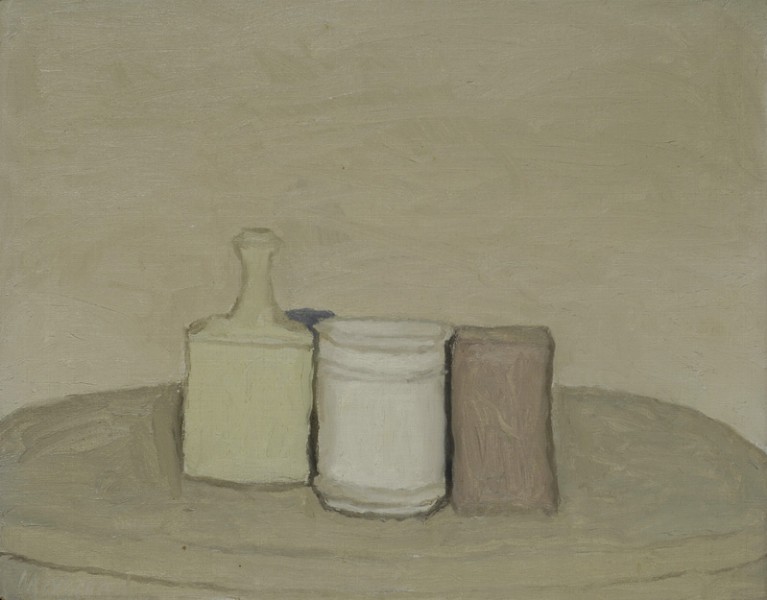Founded in 1968 by Piero Pananti and subsequently enriched by the active presence of his son Filippo, the Pananti Gallery has become a point of reference and meeting point for scholars, collectors, art critics, painters, sculptors, thanks to its continuous exhibition activity, with solo and group exhibitions; of auction sales on behalf of third parties; flanked by the uninterrupted publishing activity.
During its more than fifty-year activity, aimed above all at supporting Italian art - from the 19th century and from the first and second half of the 20th century - the Gallery has organized in its premises and abroad (Switzerland, United States and France) more than four hundred art exhibitions and created over 500 publications (exhibition catalogues, monographs, series of fiction, non-fiction and poetry).
With the sale of Carlo Ludovico Ragghianti's collection, it became an Auction House, organizing, to date, 331 live and online auctions of modern and contemporary art, painting and sculpture.
The editorial and exhibition activity of the Gallery, also aimed at serving public exhibitions in Italian and foreign Municipalities and Museums; Lugano, Villa Malpensata, on behalf of the Dicastery of Museums and Culture of the city of Lugano, the great anthological exhibition: “Mino Maccari, “The Genius of irreverence” (1986); Municipality of Grosseto, Archaeological Museum (1988) organized and published the catalog of the exhibition "The long journey of Maccari with his time", to remember the artist "In the centenary of his birth", an exhibition which, due to its high cultural content, was later hosted by the Campania Region at the Royal Palace of Naples and, in Puglia, by the Province and the Municipality of Bari at the Provincial Art Gallery of that city.
For the editions, the following are worthy of note: "The silences of Rosai" by Romano Bilenchi (1971) and "Lettere a Flaiano (1947-1972) by Mino Maccari (1991); the beginning of the handout cataloging of the work of "Mino Maccari" and of the "Drawings of Ottone Rosai", the "Cataloguing of all the engravings by Giovanni Fattori in the Franconi Collection", edited by Andrea Baboni, with a preface by Federico Zeri , a collection which was later donated to the Carrara Academy of Bergamo; the publication of the General Reasoned Catalog of the Incisa work of Piero Dorazio (1962-1993) edited by Gabriele Simongini. Among his major publishing awards he received in 1983 with the volume by Carlo Betocchi "Memories, stories and poems in prose", the Librex-Guggenheim Prize, Eugenio Montale for Poetry.1971.
And again the “Panantine” series, which began way back in 1978 with the publication of: Short Stories, Poems and People, in which the major Italian authors participated with their works: Moravia, Parazzoli, Bilenchi, Cancogni, Strati, Tassi, Pampaloni , Garboli, Piccioni, Lagorio, Siciliano, Parronchi, Gherardini Ginzburg, Guttuso, and many others, collecting more than 110 titles; the narrative series "Il Picchio", and the magazine "L'Indiscreto", of culture and more, edited by Silvio Loffredo and Piero Pananti, in which artists and writers such as Mino Maccari, Ennio Flaiano and many others collaborated and today on line indiscreto.org with 500,000 visits a year, directed by Francesco D'Isa, writer and visual artist.
For the exhibition activity we mention below the historical and personal exhibitions most worthy of being remembered, are those organized on the occasion of the centenary of the birth of two of the most important Italian painters of the twentieth century: Ottone Rosai (1995), and Filippo de Pisis (1996), exhibitions which were awarded the "High Patronage of the Presidency of the Italian Republic" due to their importance. This attribution is granted only to cultural events of great national value (and very rarely granted to private organisations). to mention the exhibitions dedicated to "Giovanni Fattori, new contributions", 1994; in 1997 the exhibition "Macchiaioli, new contributions" also curated by Dario Durbé, together with those dedicated simultaneously to "Antonio Puccinelli", on the occasion of the centenary of the artist's death, in collaboration with the Municipality of Castelnuovo di Sotto (1998); the "Epocale" exhibition (four generations of artists and their movements in comparison): Pop, Graffiti and Cracking Art and the one in collaboration with La Galleria Mazzotta in Milan, dedicated to the work of Andy Warhol (1999). In March of the same year, the Gallery began a real consultancy and auction sales activity on behalf of third parties on a quarterly basis, holding an important sale of 19th and 20th century paintings and drawings and objects of art on its premises. antiques with works coming in part from the collection of the Ragghianti heirs, (with paintings and drawings), and from the heirs of the Florentine antique dealer Giovanni Bruzzichelli, one of the most important Florentine antique dealers of the first and second half of the twentieth century with furnishings, furniture and objects antique. Subsequently, in December, he carried out the second auction sale of the 1999 season of paintings, drawings and sculptures from the 1800s and 1900s. In 2000, in collaboration with the Lionello Balestrieri Foundation under the aegis of the Municipality of Cetona, he published the volume on the work of Lionello Balestrieri, "A hundred years after the awarding of the gold medal to the artist at the Paris Universal Exhibition"; in 2001 the Homage to Ardengo Soffici "A Tuscan art for Europe" by Luigi Cavallo. The exhibition in memory of "Ottone Rosai, fifty years after his death" under the aegis of the Municipality and the Province of Florence, at Palazzo Medici Riccardi in 1097. For Modern and Contemporary Art in 2012, the tribute exhibitions to Alberto Burri, the homage to Renato Guttuso, and in July-September the homage to Mino Maccari "La commedia nell'Arte" with unpublished and rare paintings by the artist organized for the Terre Medicee Foundation in the Palazzo Mediceo of Seravezza and the very numerous (more than 400), personal exhibitions of authors, among the best of the first and second Italian '900.
All exhibitions are accompanied by a fully illustrated catalogue.

